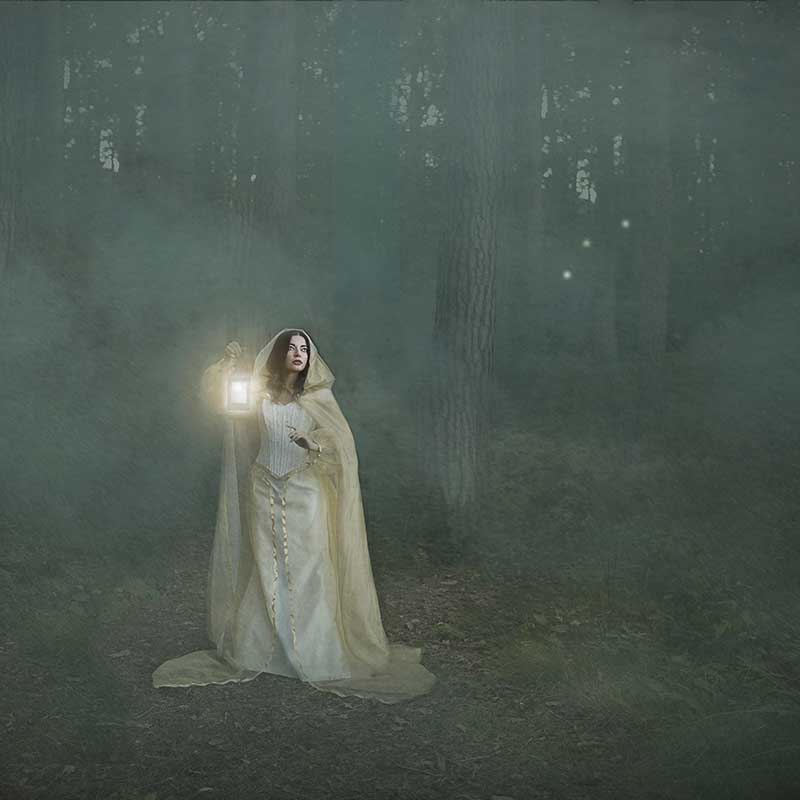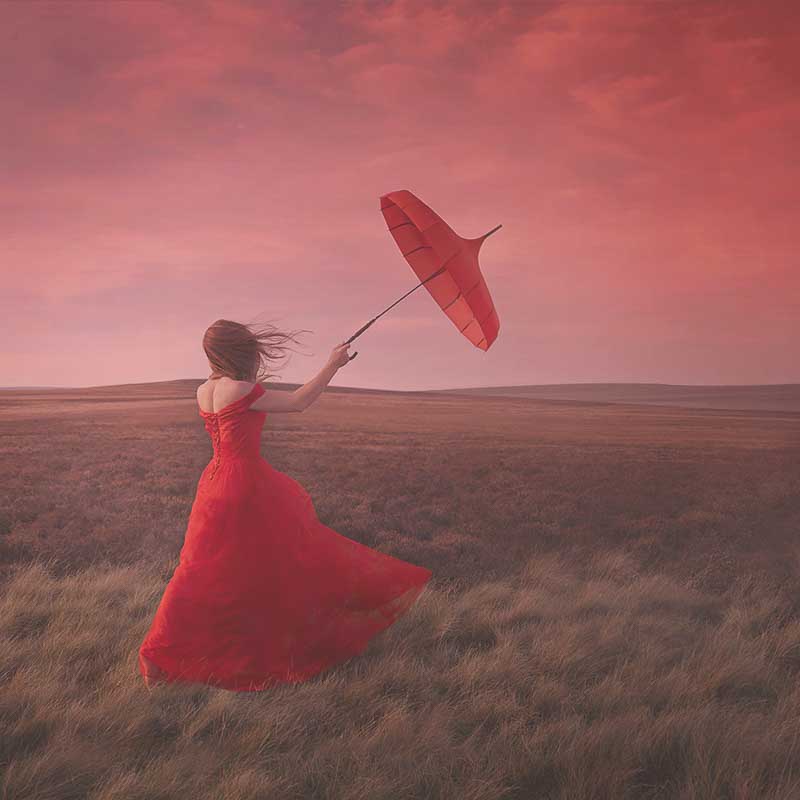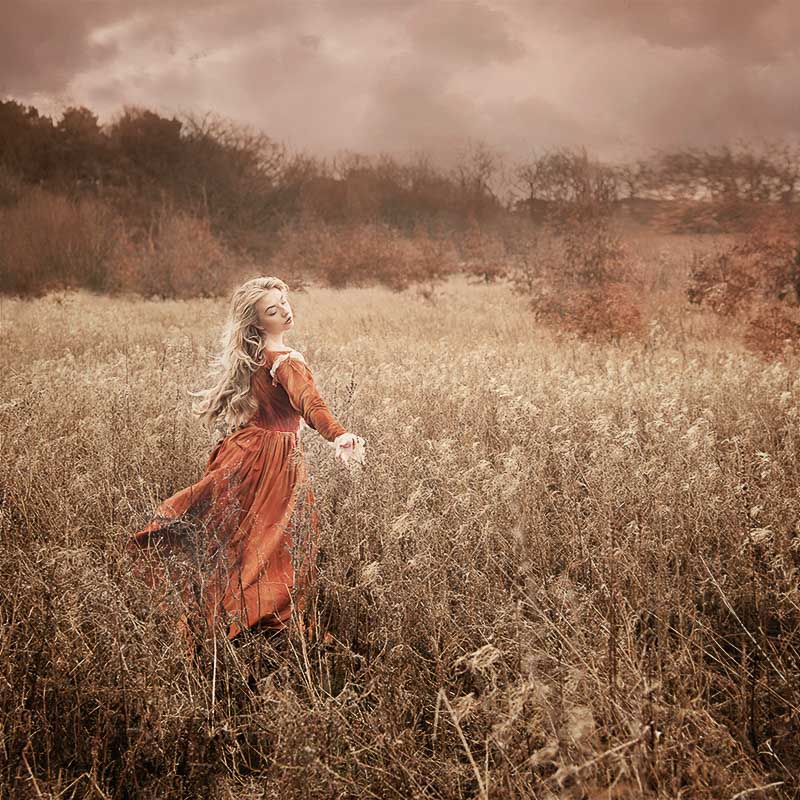Ceridwen Raynor is a fine art photographer, producing stunning and evocative images that draw from fairy tales, myth, history and fantasy. Her work encourages viewers into a dreamy story, offering an escape from the everyday.

How did you get into photography and what’s your background?
I got into photography for fun. I felt like everyone else came back from holiday with better pictures of the places they had visited than me! I’d always been keen on taking pictures but was frustrated with what I’d produced; so a few years ago I treated myself to an entry-level DSLR and tried to learn some new skills.
As a freelance management consultant and project manager, my work varied a lot. At times I’d be working mostly from home with limited contact with colleagues. So, I decided to join a photography club to both develop my skills and for the social aspects.
Over the next couple of years I learned a lot and I tried out lots of different sorts of photography with various degrees of success! I quickly got hooked on photographing people in a studio environment and started introducing more styling. Gradually, I found it was images with a story that really interested me. I started to shoot on location more often and put more effort into planning my images. I also spent a lot of time improving my photoshop editing skills too.
Along the way I discovered lots of amazing well-known photographers whose fine art photography helped inspire me to push my own further. These included Kirsty Mitchell, Bella Kotak, Rosie Hardy and Brooke Shaden. Brooke, in particular, is a huge inspiration; she shares such a strong message about living your passion and pushing yourself to reach your potential. Her openness about how she operates as a fine art photographer made me realise that it could be more than a hobby. I’d had a lot of suggestions from people that I should sell my work and so I decided to give it a go.
What kit do you shoot with and what would you say are your essentials to have on a shoot?
I’ve used Nikon equipment since I started and currently have a D750, which is great for low light. I mostly shoot with an AF-S NIKKOR 24-70mm f/2.8E ED VR but I also love my AF-S NIKKOR 70-200mm f/2.8G ED VR II. I have an AF-S NIKKOR 50mm f/1.8G for when I’m walking around shooting for fun and want something lightweight.
Read our Guide to the Best Nikon Cameras
My essentials are very practical. I carry black sacks; these are useful for kneeling on, protecting camera bags from damp ground and for dumping wet muddy dresses into.
I have baby wipes for cleaning feet, as I tend to photograph models with bare feet on the rare occasion the dress doesn’t cover their shoes. Hairgrips are essential for securing crowns and headdresses. Spare hair bands can be useful for changing styles and I like to have some safety pins for securing costumes when needed.
And what are your top three photographic accessories?
I have a Manfrotto MT 190 CXPRO3 carbon fibre tripod with a magnesium head. I shopped around quite a bit before I chose this because I wanted something that was relatively sturdy but also quite lightweight.
You can buy the Manfrotto MT190 CXPRO3 Tripod from Wex Photo Video in the UK and Adorama in the USA.

How do you come up with the concepts for your images and what inspires you?
I never seem to struggle for ideas, I find so much inspiration! I have a long list of potential concepts that I keep online, so I can add to it on my phone or computer whenever an idea strikes.
I share my name with a Celtic goddess, so I was destined to have an interest in myth and legend. I’ve also always been an avid reader of fairy tales, history, and fantasy. All of these are a big inspiration to me.
I adore much of the work of the Pre-Raphaelites who shared similar sources of inspiration. I’ve always struggled to translate the stories I saw in my head onto paper through traditional art forms. Photography has provided me with a way of making them into something visual I can share.
For me, sometimes a shoot concept starts when I find a costume, prop, location or someone with a particular look that I’d like to work with and develops from there. It also works in reverse too though and I seek these out to fit an already worked-up concept.

As a fine art photographer, how do you sell your work, and how easy do you find this?
I mostly market my work through galleries and exhibitions, but I’ve also done the odd art fair.
I think you have to experiment to find the places where your work is a fit, which can take a while. Sadly photography is still not perceived by some in the art world to have the same value as ‘traditional’ artwork. So, it can be an uphill struggle with those who don’t value our work.
Sticking to fairly limited editions for prints rather than open ones does help get a more positive reception in some cases.
Also, I was highly commended in the Visual Art Open competition earlier this year and I think having that on my CV has helped my reception in some circles too.
Read: Elke Vogelsang Explains How to Get Started in Dog Photography

As a female photographer, do you feel that you face any particular challenges? Do you feel that the industry is favourable towards women, or would you like to see any particular changes?
My perception is that photography, in general, is still quite male-dominated. It is good to increasingly see women with a higher profile across many of the genres, including fine art, though.
Opportunities like juried exhibitions and competitions being judged blind do help level the playing field.
I’ve also seen more women coming into photography both for fun and professionally. I think having women-only online spaces such as SheClicks has helped.
It’s great that many photography clubs and events such as The Photography Show also seem to want to become more female-friendly. That’s due at least in part, I feel, to women individually and collectively being clearer about what will make them more likely to want to get involved.

What are you working on at the moment and what are your plans for the future?
I’ve got concepts for a couple of series of images that I need to develop further before I start shooting them.
I tend to shoot less often over the autumn and winter because of the challenges of outdoor work in the very unpredictable British weather. So, I’m focusing on planning these for next year now.
I also want to be more inclusive with the people shown in my work.
Another objective is to promote my images more overseas; to date, this has been limited to exhibiting a couple of times in the USA.
A recent project for me that I’m passionate about has been setting up a free online fine art photography group for people in the UK and Ireland. As a fine art photographer getting started, I couldn’t find anything locally-focused which was frustrating. So, a couple of months ago I decided to fix this for others by setting up a community. It has been great to see how quickly the group has grown in such a short time. We help members find opportunities to get their work out there and more experienced members offer support and advice on different aspects of fine artwork, including getting started.
On a personal level, it has been great to be able to pay forward some of the help I received and to encourage more people to turn their dreams of pursuing fine art photography into a reality.
Connect with Ceridwen Raynor
Website
Instagram
Facebook
Fine Art Photography UK and Ireland Facebook Group



